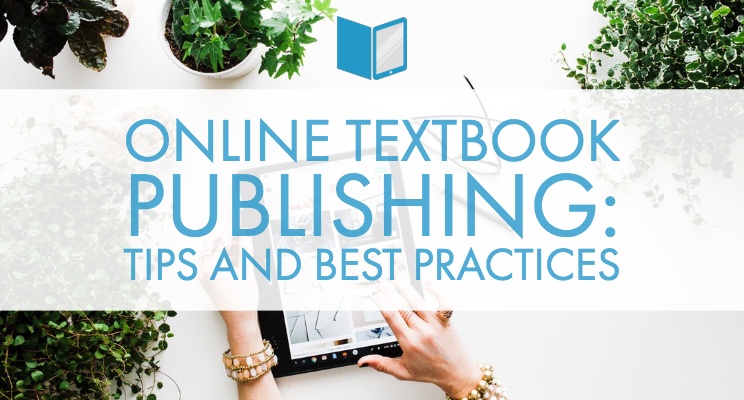When entering the digital publishing arena, there’s a lot to think about. It’s easy to make an online textbook. Making a GOOD online textbook is a whole different ballgame. An online textbook done well does more than just slap information on a screen. Instead, it’s automatically engaging, readable, and helps students achieve a particular learning outcome. Though it may be tempting to whip out as many textbooks as possible, the game is about quality, not quantity. Follow these 6 online textbook publishing best practices to create learning content that checks all the right boxes.
1. Know Your Market
Understanding your target market is one of the basic principles of business. The publishing business is no exception. Before you begin creating content, do your research. Learn everything you need to know about your audience. This goes beyond age and education level. Research what methods of education result in the best learning outcomes. Research what your audience needs to stay motivated and what they expect out of an online course. Appeal to the interests and goals of your target market, and you’re on your way to creating an online textbook worth reading.
2. Create Valuable Content
The foundation of any e-book is clear: the content. Without solid, well-written content, any online textbook endeavor is a bust. Once you’ve covered step one, apply the results of your research to the content at hand. Make sure the content fits the audience- if you’re creating a textbook for PhD candidates, don’t write it to fit a 9th grade reading level, and vice versa. Have a clear learning outcome in mind and create all content to support those goals. Additionally, with so many online learning resources available for free, it’s of the utmost importance to make sure your content is up to date and relevant. If your information is old, it will show.
3. Reduce, Reuse, and Recycle
Remember that old recycling adage? It now applies to publishing. To make the most of your time and effort, utilize quality reusable learning objects. These bite-sized segments of content are ideal for creating content that can be reused in future publishing projects. An ideal, customizable learning object can be recycled easily by applying minor changes to design or content. They include targeted metadata, so they can be organized, highly discoverable, and easily reused. This enables publishers to reduce the amount of time they spend recreating old content, freeing up extra hours to create new, innovative learning material.
4. Stimulate Your Audience
Today’s learners are accustomed to an instant world. Information and entertainment are available at the tips of their fingers 24/7. Social media breaks up content into short bursts- much shorter than an average textbook page. Because of this, the majority of people are no longer used to reading long stretches of text. To combat this effect, online textbooks must adapt. It’s best to break up long stretches of text with images, graphics, video, or interactive activities. This holds the students’ attention, improving involvement and retention.
5. Dress For Success
When presenting a big business proposal, would you show up in shorts and a t-shirt with a poorly-drawn poster? If not, why would you treat an online product any different? The presentation of content matters almost as much as the quality of the information. Reusable learning objects are extremely useful, but it’s often necessary to adapt them to blend in with new material. None of the content should stylistically stick out like a sore thumb. Create a cohesive theme that’s both functional and easy on the eyes.
6. Optimize For Mobile
In 2018, this should go without saying. Online content MUST be optimized for mobile. Regardless of age, students today expect to access their learning on the go. If your content can’t be used on an iPad, it’s time to step up your game. Take the steps to make sure your content is easily accessed, works smoothly, and looks great on all mobile platforms. Your audience (and sales) will thank you.
The Recap
To sum it all up, learn your audience, and provide value with high-quality, reusable content. Put it all together in an accessible, appealing, user friendly package using an industry-standard authoring tool like Gutenberg Technology’s MyEcontentFactory. By following these simple practices, you’re well on your way to successfully publishing an online textbook.






Leave a comment